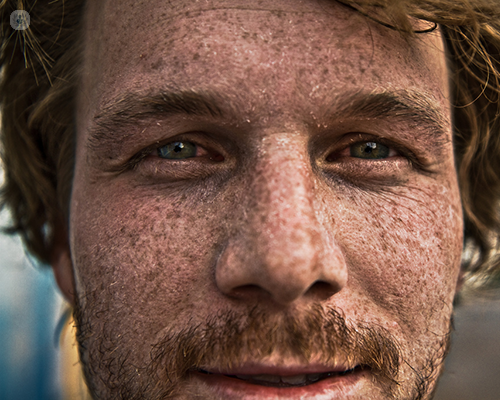All you need to know about moles
Written by:Moles are extremely common. Most people have around 10 to 40 moles on their body. They can come and go over the years, and are often affected by hormonal changes such as during adolescence or pregnancy. Made up of cells called melanocytes, which cause the pigmentation, moles are usually harmless but can occasionally become cancerous.

What do normal moles look like?
Normal moles are usually round or oval with smooth edges. They are mostly brownish or blackish in colour, but can appear to be skin-coloured. Some of the most common types of moles are:
- Junctional melanocytic naevi –generally brown, round, and flat moles
- Compound melanocytic naevi – occasionally hairy, these moles are normally raised above the skin and of a light brown colour
- Dermal melanocytic naevi – also raised above the skin, of a pale colour, and occasionally hairy
There are rarer forms of moles that may look strange at first glance, but are generally no cause for alarm. These include:
- Halo naevi – moles surrounded by a white ring where the skin has lost its pigmentation
- Blue naevi – dark blue moles
- Atypical naevi – strange looking moles that can be a variety of colours and either flat or bumpy
Cancerous moles
Although moles are generally benign, they can become malignant or develop into melanoma, an aggressive and deadly form of skin cancer.
After adolescence, moles appear with less frequency so it is advisable to regularly be on the lookout for new moles or moles that have changed in appearance. A guide to help people identify possible cancerous moles is the ABCDE system.
- Asymmetry. Most moles are symmetrical
- Border irregularity. Moles with jagged edges are usually a tell-tale sign of something amiss, as they are usually smooth-surfaced
- Colour change. Moles generally don’t change colour, or contain more than two colours
- Diameter. Moles are not usually bigger than 6mm in diameter
- Elevated or enlarged. Moles do not get much bigger over time
Cancerous moles or melanomas are generally unevenly coloured. They may bleed, itch, and become red or inflamed. Abnormal moles may be found anywhere on the body, but mostly on the back, arms, legs, and face.
Skin cancer prevention
People with lots of moles should take extra precautions in the sun in order to reduce their chances of developing skin cancer.
- Stay in the shade when the sun is at its strongest
- Use high-factor sun cream, frequently re-applying (especially after swimming)
- Cover up with clothes and a hat
- Avoid sunbeds
Contact a specialist if you have any doubts about moles on your body, or are exhibiting any of the previously mentioned cancerous mole symptoms.


